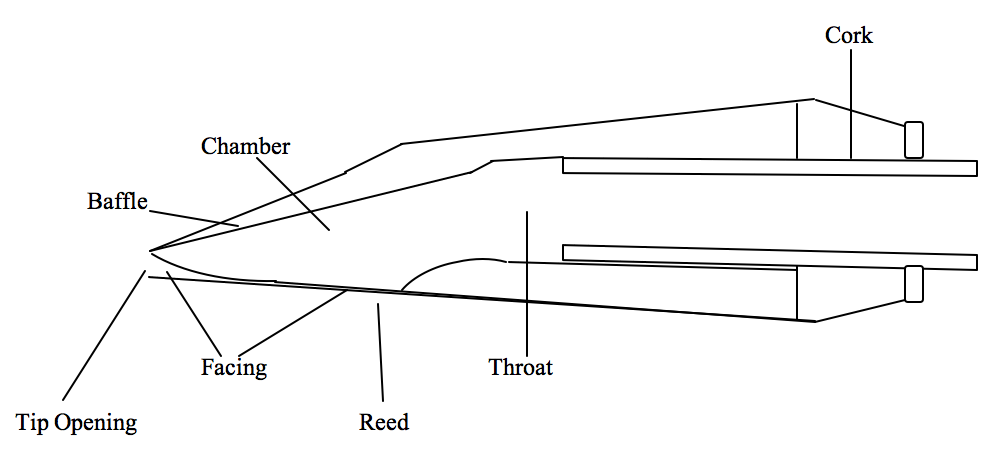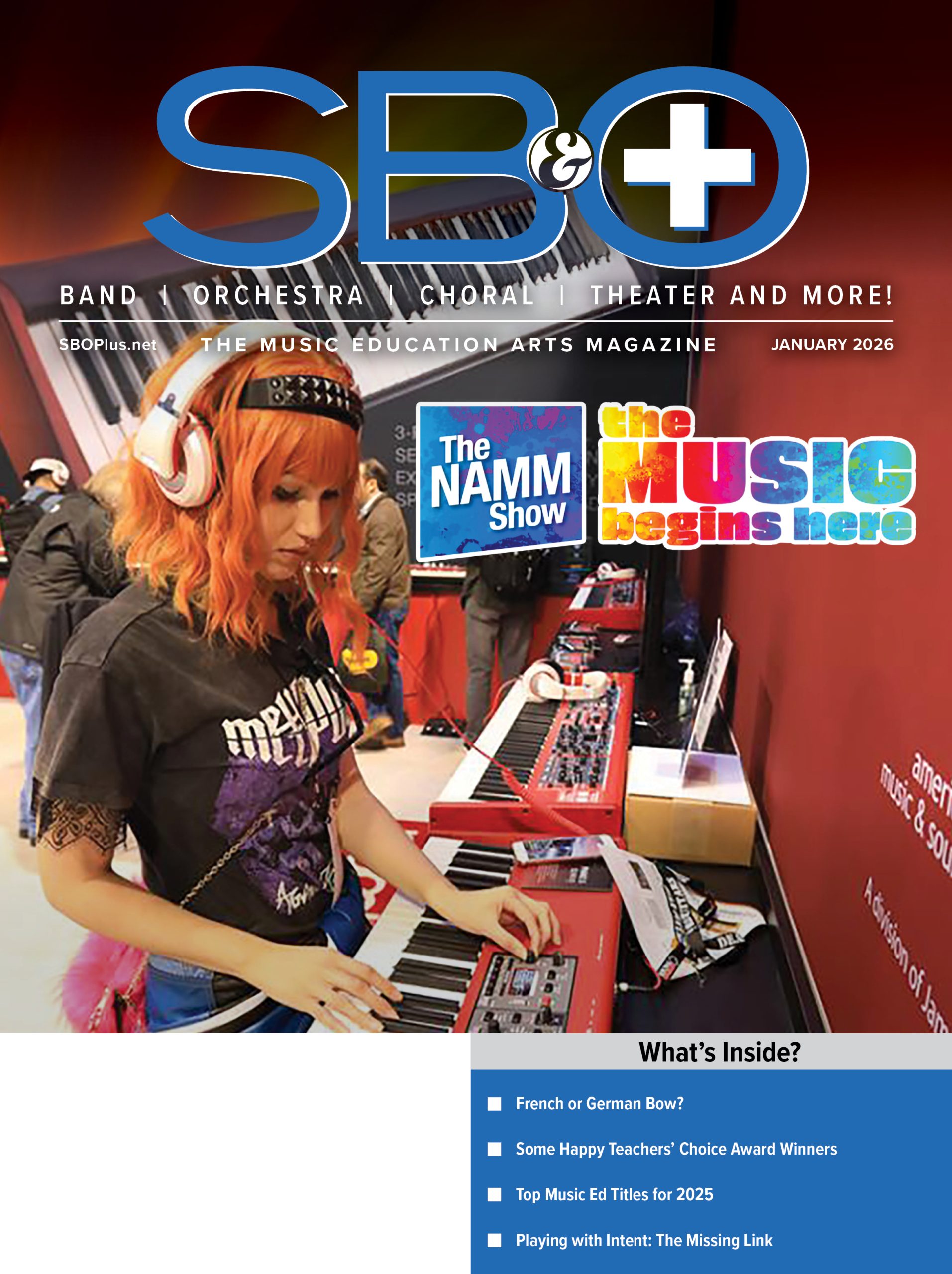 The saxophone is usually viewed by the wider public as a “jazz instrument,” thanks to nearly one hundred years of iconography associated with that art form. However, most in the music community now recognize that the instrument is capable of performing in any musical style, from contemporary classical to jazz to rock to pop to salsa, and so much more. The saxophone has been viewed by most as a valuable and viable voice in every style of music for decades now. Anyone in the music education profession who claims the saxophone is not an instrument capable of playing classical music is derided as a fogey or curmudgeon.
The saxophone is usually viewed by the wider public as a “jazz instrument,” thanks to nearly one hundred years of iconography associated with that art form. However, most in the music community now recognize that the instrument is capable of performing in any musical style, from contemporary classical to jazz to rock to pop to salsa, and so much more. The saxophone has been viewed by most as a valuable and viable voice in every style of music for decades now. Anyone in the music education profession who claims the saxophone is not an instrument capable of playing classical music is derided as a fogey or curmudgeon.
However, most students come from families outside of the musical cognoscenti. Many children will come into beginning band with dreams of being the next pop or rock saxophone star. Increasingly common, as students mature they hear how “scary” improvisation is, and begins to gravitate towards straight “classical” playing. Instead of solely nurturing one style of saxophone playing, students should be encouraged to make use of all of the wonderful potentialities of the instrument, so that they can enjoy any possible form of music making throughout their lives.
Two Pockets
A great teacher of mine often referred to two “pants pockets.” In one, a saxophonist keeps their classical skills, and in the other they keep their jazz skills. The two different styles shouldn’t mix, but they should both be handy for any given musical situation. I’ve always loved this analogy, and I think it’s very astute.
I’ve heard far too many students at solo and ensemble contests, auditions, and the like, playing classical pieces with a jazz sound and inflection. I’ve also heard young students in jazz bands performing with a classical sound and style. Neither of these is appealing. Instead, students need to understand the differences involved between the various styles and approaches to saxophone playing.
The Tools of the Trade
A word about equipment should come first: Many charlatans are lurking in the world, touting their instruments as “perfect for jazz” or “great for classical playing!” In truth, a quality saxophone is a quality saxophone, and all reputable brands are manufactured to allow for absolutely any type of playing. The student should simply be on the highest-quality instrument possible.
I do advocate one big difference in equipment when switching between styles: A different mouthpiece and reed combination. The classical and commercial genres require different sounds, approaches to articulation, etc. While the performer mostly accomplishes this, a purpose-built, high-quality mouthpiece will make their lives easier. For instance, standard choices for classical alto performance include the Selmer S-80 C*, the Selmer S-90 190, the Selmer Concept, or the Vandoren Optimum AL3. For jazz alto, the Meyer 5M, Vandoren V16 5M, Jody Jazz HR 5M, and the D’Addario Select 5M are all great choices.
The classical tenor player may find the most success with a Selmer S80 C**, a Selmer S90 180, or a Vandoren Optimum TL3. For jazz, the Otto Link metal 7*, the Vandoren V16 hard rubber T7, and the Jody Jazz HR 7* will all work beautifully. For all saxophones, avoid “gimmick” mouthpieces. The best mouthpiece (for any genre) is that with the most flexibility and control. Extreme tip-openings and facings will only lead to musical heartache.
As far as reeds go, it’s really up to the preference of the student. Some players use “classical” reeds and “jazz” reeds, while others use the same make on both setups. However, since classical and jazz mouthpieces are designed differently, the student will normally need to play reeds that are slightly lower in strength on their jazz mouthpiece.
Embouchure
While some teachers advocate different embouchures for jazz and classical playing, I am of the opinion that one can serve both purposes. All saxophonists should raise the neckstrap until the mouthpiece enters the mouth without the player having to lift with the hands (which should just balance the saxophone and remain free and relaxed to perform). Then, the students should rest their top teeth on the top of the mouthpiece, with the weight of the head supported by the instrument and neckstrap. The corners are brought in, puffing up the lower lip. The lower lip is then rested against (not really “pulled over”) the lower teeth, with the reed resting on this cushion. A quality sound in any style can be produced with this embouchure.
Articulation
One of the biggest differences between the performance of commercial and classical styles is articulation. While in concert music, an articulation marking means more or less the same thing all the time, with variances for the style of the piece, in jazz, Latin genres, and other commercial styles, the same articulation marking can mean extremely different things, depending on the circumstance. It is always a great idea to demonstrate style to the students, whether through performing excerpts yourself or through recordings. Entire tomes have been written on jazz articulation, but the only really effective way to teach students the finer points is to have them listen and replicate.
Sound
Classical and jazz saxophone sounds are vastly different. A killer jazz sound is a beautiful thing, but a killer jazz sound in a concert ensemble isn’t. Likewise, a great classical sound would be pretty lame in a big band or combo (think Lawrence Welk). The saxophone is an incredibly flexible, multivalent instrument, and students should accept that as a given. They can even have fun with it: Instead of having just one sound, they can experiment with many different sound “masks” for every occasion.
Role Models
Having said all of the above, how are students supposed to know what a great classical or jazz sound is? How are they supposed to learn about style? As always, the musician’s greatest tool is a busy set of ears. Young saxophonists, from the first day, should have quality recordings available to them. With online video-sharing and streaming services, it is incredibly easy to give a student a list of names and let them start exploring for themselves.
For classical playing, I recommend that students start with the following aural role-models:
• Claude Delangle
• Vincent David
• Clifford Leaman
• Joseph Lulloff
• Timothy McAllister
• Deborah Richtmeyer
• Taimur Sullivan
• Kenneth Tse
All of these players are masters of the concert saxophone, and a section of young players listening to them will pay BIG dividends in the future.
For jazz, there are many obvious choices that every young saxophonist should be aware of, including Charlie Parker, John Coltrane, Phil Woods, Pepper Adams, Michael Brecker, Chris Potter, and many more. However, there are a few less obvious choices, as well, that are highly recommended from a pedagogical perspective. Especially as a young saxophonist becomes serious about improvisation, they need musical models that are just a bit more accessible than the Coltranes of the world. Here is a list of jazz saxophonists that may inspire young players without overwhelming them (and who possess beautiful sounds):
• Paul Desmond
• Lee Konitz
• Gerry Mulligan
• Lester Young
It is hoped that with these first steps, the young saxophonist can begin a transition into comfortably playing in both the classical and jazz traditions. From here, the sky is the limit, with thousands of quality concert pieces to play and the subject of jazz improvisation to be broached. The saxophone is a wonderful, boundless instrument, and all of our students should be able to play whatever they wish.
Dr. Andrew J. Allen is an assistant professor of music at Midwestern State University in Wichita Falls, Texas. As a saxophonist, he has commissioned more than a dozen new works and has appeared as a soloist throughout the United States and Europe. He holds degrees in music education and performance from Tennessee Tech University, Central Michigan University, and the University of South Carolina, and his teachers include Phil Barham, John Nichol, Joseph Lulloff, and Clifford Leaman. Dr. Allen is a Conn-Selmer Artist-Clinician and an Endorsing Artist for Legere Reeds, Ltd.





























